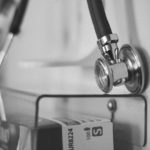There are numerous disorders that can affect an otherwise healthy heart. Disorders that occur in the atria are known as atrial or supraventricular arrhythmias. Meanwhile, ventricular arrhythmias take place in the ventricles. Here are the most common heart rhythm disorders to be aware of presented by Dr. Allen Amorn, a cardiologist in Canfield, Ohio.
Atrial Fibrillation
Atrial fibrillation is otherwise known as a rapid heartbeat that takes place in the upper chambers of the heart. This happens when the electrical impulses become chaotic and are not controlled by the natural pacemaker cells of the heart. It’s the most common heart rhythm disorder and is commonly linked with heart failure.
While this problem can be intermittent, however over time can also become persistent. Some blood will remain in the upper chambers of the heart, which may lead to blood clots and stroke. An electrophysiologist can prescribe medications or perform procedures called catheter ablation for patients with atrial fibrillation.
Atrial Flutter
Atrial flutters are similar to atrial fibrillation except they produce a fast and regular heart rhythm. This problem is less common than atrial fibrillation but shares similar complications and symptoms. During atrial flutter, the upper chambers (atria) contracts at 300 beats per minute instead of the typical 60-100 beats per minute. An electrophysiologist can work with you to determine the cause for atrial flutter using multiple types of therapy.
Premature Heartbeats
Extra or premature heartbeats are a common heart rhythm disorder. The reason why this disorder is so serious is that it can have very limited symptoms. If symptoms do occur, they can range from skipped heartbeats to a fluttering sensation in the chest. Premature heartbeats don’t require emergency medical treatment, especially in healthy individuals.
Atrial contractions are premature heartbeats that are located in the upper chambers. Premature beats that are located in the ventricles are otherwise known as premature ventricular contractions (PVCs). These can happen naturally without being linked to heart disease, but oftentimes heart disease can lead to premature heartbeats. This could also be a sign of too much caffeine, exercise, nicotine, or stress.
Sinus node dysfunction
Heart rhythm disorders are sometimes connected to sinus sinus node dysfunction, which are the heart’s natural pacemaker cells. Some of those irregularities include sick sinus syndrome, sinus arrhythmia, or inappropriate sinus tachycardia. Sick sinus syndrome occurs when the sinus node doesn’t send signals to the heart, so the rate slows down. Sometimes it can fluctuate between a fast (tachycardia) and a slow (bradycardia) heart rate.
Sinus arrhythmia is the name for a disorder when the heart rate changes while breathing. This disorder is common among adults and children and is a normal occurrence. Sinus tachycardia happens when the electrical signals are so fast that it increases the heart rate. Common causes include dehydration, excitement, exercise, fever, medication, and an overactive thyroid gland. Rarely sinus tachycardia can be without an overt secondary cause which is called inappropriate sinus tachycardia (IST).
Slow Heart Rhythms
Slow heart rhythms other than sinus node dysfunction can be related to heart block. This happens when the electrical signals located in the upper chambers of the heart can’t reach the lower chambers of the heart due to damage within the AV node. Depending on the severity of the heart block, these electrical signals may become partially blocked or slow down. If you have heart block, you may experience dizziness or faintness that could lead to unconsciousness. This can be very serious and could require emergency services.
Supraventricular Tachycardia
This problem is known as a fast heart rhythm that takes place in the upper chambers of the heart. The beats that are located in these chambers are early and frequently speed up. These beats are so persistent that they can take over the normal heart rhythm which is referred to as paroxysmal atrial tachycardia (PAT). Two other forms of supraventricular tachycardia include atrioventricular nodal re-entrant tachycardia (AVNRT) or atrioventricular re-entrant tachycardia. These two forms are related to abnormal connections between the atria and ventricles and can be cured with catheter ablation.
Ventricular Tachycardia
This rapid heart rhythm takes place in the lower chambers of the heart. This heart problem can become very serious if left untreated. Immediate treatment by an electrophysiologist is necessary to reduce these complications. If you experienced a heart attack or heart failure, you’re at increased risk for this rhythm disorder.
Ventricular Fibrillation
This involves a rapid and irregular heartbeat that causes chaotic and uncoordinated quivers in the lower chambers of the heart. This is the most serious heart rhythm disorder because there’s no blood being pumped out. This can lead to unconsciousness and can be fatal if left untreated. A doctor who performs cardiopulmonary resuscitation (CPR) or defibrillation shock can restore your heart to its normal rhythm.
That’s why it’s imperative for all individuals to learn CPR and to use emergency procedures if someone they know has heart problems.
An electrophysiologist can test the electrical activity and rhythms of your heart to find out the cause of the heart rhythm disorder. The doctor can help you determine if you need a cardiac ablation, an implantable cardioverter defibrillator (ICD), medication, a pacemaker, or surgery. Dr. Allen Amorn is an electrophysiologist from Ohio who has worked at many hospitals in the state, including Mercy Health-St. Elizabeth Boardman Hospital and Mercy Health-St. Elizabeth Youngstown Hospital.










